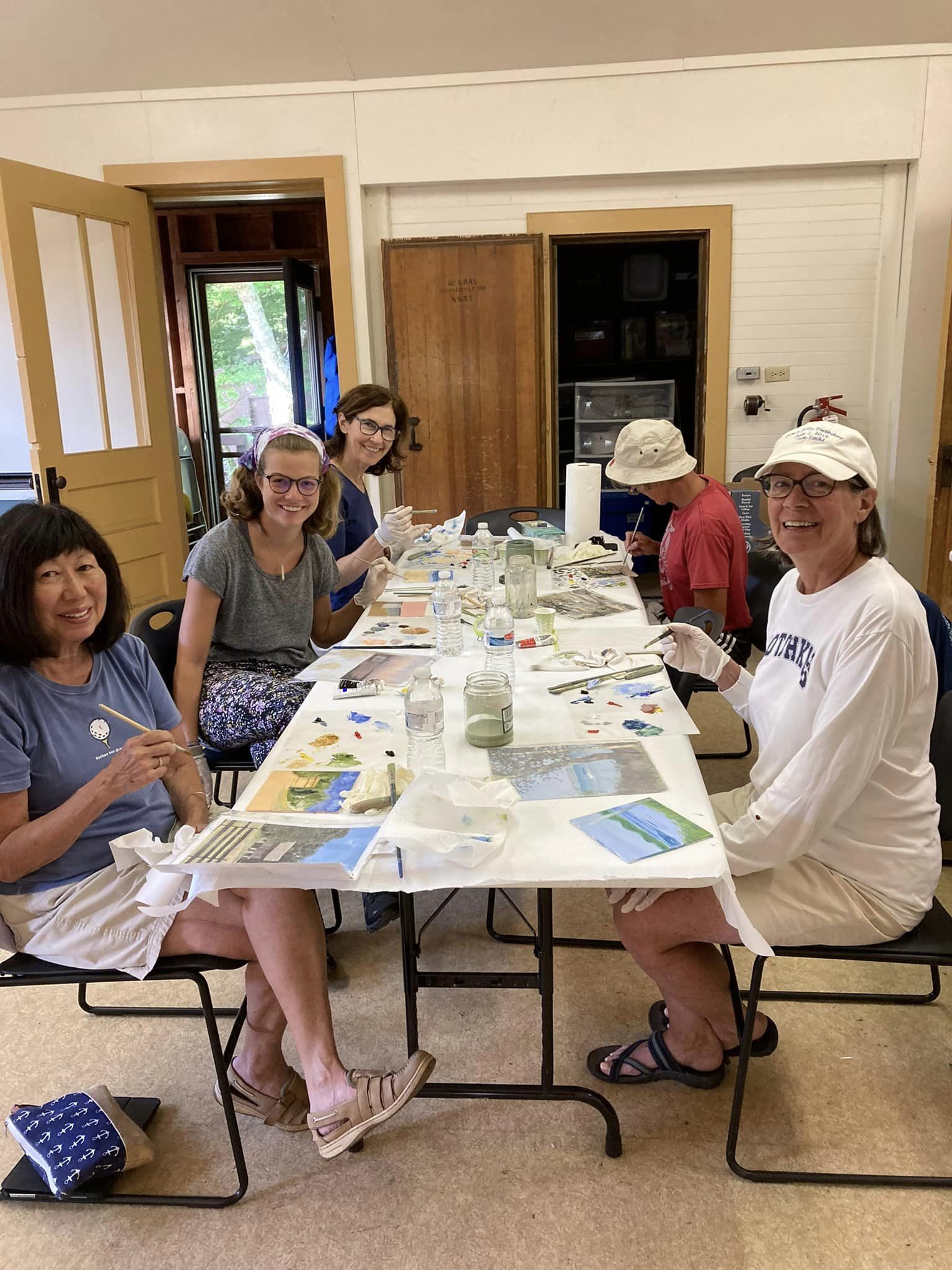Spotlight on CSA Committees: Arts Committee
By Ginanne Brownell - May 18, 2023
Over the years, the roles of various committees at the CSA have changed, developed, and grown with responsibilities. The Communications Committee was formed back in the early 2000’s and does everything from updating CSA social media pages to the weekly summer newsletters and publishing stories of interest. We will be doing a series of features focusing on all the different committees. The idea is for the members of the CSA to better understand how these committees work, what they do and their role in the wider CSA community.
Our first committee we are featuring is one of the newest (started in 2015), the Arts Committee.
Jane Cooper, the current CSA archivist, knows a thing or two about the arts and cultural history at Pilgrim over the decades. Her Aunt Jean Sicha Roberts was in the first operetta “The Snow Queen” in 1931, while Jane herself was in Tom and Emilie Williams’ first operetta that they directed in 1948. (She said that during and immediately following World War II, there were no operettas but the Williams instead concentrated on choirs). She said about the legacy of arts at the CSA that, “there is synergy - an appreciation for what goes into various art forms and productions by being with so many different people at the Assembly.” That was likely part of the reason that Elizabeth Gottlieb came up with the idea to form that Arts Committee in 2015.
According to Barb Perry, the current head of the committee, “Liz saw so much potential for creativity and wanted to give new ideas a place to blossom.” The idea was to, as the Arts Committee website page says, “encourage and oversee artistic endeavors and the creative spirit for all ages.” The CSA has long bee n a rich place for painters, actors, singers, musicians, composers, photographers, and writers who not only pursue these endeavors in the summer months but professionally as well.
n a rich place for painters, actors, singers, musicians, composers, photographers, and writers who not only pursue these endeavors in the summer months but professionally as well.
 n a rich place for painters, actors, singers, musicians, composers, photographers, and writers who not only pursue these endeavors in the summer months but professionally as well.
n a rich place for painters, actors, singers, musicians, composers, photographers, and writers who not only pursue these endeavors in the summer months but professionally as well.Each summer the committee oversees the Art and Writing workshops, CSA Big Read, Talent/Stunt night, and the Authors and Artisans Fair. “In the past two years, we encouraged but didn’t oversee ‘One Beautiful Thing,’ Barb wrote in an email, pointing out that the committee does not put together musical concerts or the operettas, though some members of the committee are also involved in those projects. Both the Art and Writing workshops and the CSA Big Read have been popular offerings from the committee (stay tuned for an announcement soon on what the book this summer will be!) and Talent/Stunt night has always brought in talented—as well as witty—members of our community to show off their talents on stage.
Meanwhile the Authors and Artisans fair allows for members of the CSA community to show off their talents for writing, painting, drawing, sculpting and photography. The fair, held in August and separate from the July CSA Art Fair, has been around for decades. According to Merry Elrick, who has currently been running the fair for the last two decades, “Anyone from the CSA is welcome to display whatever they choose at no cost. Any proceeds from sales go directly to the artists and artisans.” For people who are interested there is a sign-up sheet that goes on the porch a few days after the July Arts and Crafts fair and the only rule, really, is to be a member of the CSA. “It seems every year different items are popular,” Merry said. “I’d say photos of the area, sometimes framed or made into note cards, do quite well. Jewelry sometimes does well also. It depends on the quality of the work, and sometimes unusual work, like handcrafted collage, is popular. I’ve tried to find a trend from year to year but have not been entirely successful.”
Merry believes what makes this fair so special is that the CSA community get to discover all the talents of other members. “It brings artists together in community,” Merry said. “Some people come year after year to exhibit and we have some new ones every year.” She added that she likes to encourage artists to demonstrate their talents while the fair is happening. People like Steve Elrick, Merry’s brother, used to set up and easel and paint while one year a woman set up her spinning wheel and worked as she sold sweaters and hats. Last summer, Merry remembered, “a young girl had a table and braided hair with sparkly yarns and ribbons and that was very popular with girls like my granddaughter.”
